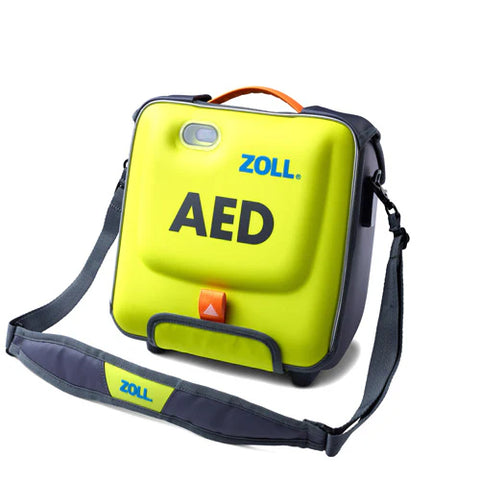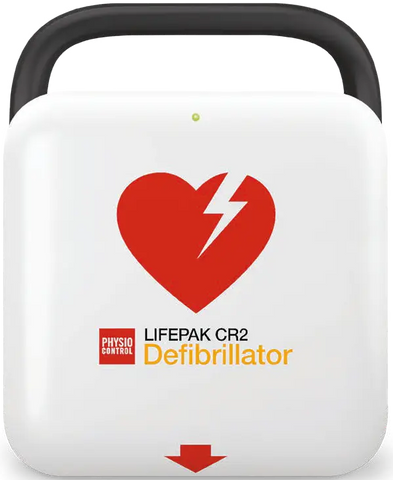

When it comes to automated external defibrillators (AEDs), the Zoll AED 3 and the Physio-Control CR2 are two of the most advanced and widely used models on the market. Both AEDs offer advanced features designed to assist rescuers during a sudden cardiac arrest (SCA) emergency. However, each device has unique characteristics that may make one more suitable than the other, depending on the environment and specific needs. This article provides an in-depth comparison of the Zoll AED 3 and the Physio-Control CR2 AED to help you make an informed decision.
Key Features Overview
Zoll AED 3
The Zoll AED 3 is a state-of-the-art AED that incorporates real-time feedback and intuitive features, making it a top choice for both trained and untrained rescuers. Here are some highlights:
- Real CPR Help: Provides real-time feedback on chest compression depth and rate, ensuring high-quality CPR.
- CPR Uni-padz: One-piece pads for both adult and pediatric use, eliminating the need for separate electrodes.
- Integrated Wi-Fi: Allows for remote device monitoring and automatic software updates.
- Rapid Shock Delivery: Typically delivers a shock in less than 8 seconds after CPR.
- Clear Voice Prompts: Guides rescuers step-by-step through the rescue process.
- Durability: Rated IP55 for dust and water resistance.
Physio-Control CR2
The Physio-Control CR2 is another popular AED model with a focus on user-friendliness and connectivity. It includes several innovative features:
- ClearVoice Technology: Provides clear audio prompts that adjust based on ambient noise.
- LIFEPAK TOUGH™ Design: Known for rugged construction, suitable for both indoor and outdoor environments.
- cprINSIGHT™ Analysis Technology: Allows for CPR chest compressions while the device is analyzing heart rhythm, reducing interruptions.
- Dual Language Capability: Can switch between two languages at the press of a button.
- Self-Monitoring: Remote monitoring capabilities and self-checks via Wi-Fi or cellular connectivity.
- IP55 Rating: Water- and dust-resistant, suitable for various environments.
In-Depth Feature Comparison
1. Ease of Use
Zoll AED 3: The Zoll AED 3 is designed with simplicity in mind. The Real CPR Help feature provides real-time feedback on chest compression rate and depth, guiding rescuers to ensure effective compressions. The intuitive design and visual prompts make it easier for untrained rescuers to perform CPR effectively.
Physio-Control CR2: The Physio-Control CR2’s cprINSIGHT™ technology allows the device to analyze the patient’s heart rhythm without interrupting chest compressions, minimizing the “hands-off” time. Additionally, the dual language capability allows rescuers to switch between languages, an especially useful feature in bilingual environments.
Verdict: Both devices are highly user-friendly, but the Zoll AED 3 may have a slight edge in feedback quality due to its Real CPR Help feature.
2. CPR Assistance and Real-Time Feedback
Zoll AED 3: With the Real CPR Help, Zoll AED 3 is particularly strong in real-time feedback. It uses visual and audio cues to guide the rescuer on compression rate and depth, aiming to meet the recommended guidelines for CPR.
Physio-Control CR2: While the CR2 also supports rescuers through ClearVoice technology and cprINSIGHT™, it doesn’t provide real-time feedback on compression depth and rate like the Zoll AED 3 does. However, the ability to continue CPR during rhythm analysis does enhance its efficiency during rescues.
Verdict: Zoll AED 3’s Real CPR Help may provide more comprehensive CPR guidance, while Physio-Control CR2’s cprINSIGHT™ minimizes interruptions during the rescue.
3. Shock Delivery
Zoll AED 3: Known for its rapid shock delivery, the Zoll AED 3 is designed to deliver a shock in less than 8 seconds after CPR is paused, reducing downtime and enhancing the effectiveness of the resuscitation.
Physio-Control CR2: The CR2 also provides a quick shock delivery but emphasizes minimal CPR interruptions with its cprINSIGHT™ feature, which may help make up for slightly longer times compared to Zoll.
Verdict: Zoll AED 3 may offer a faster shock delivery in cases where CPR has been paused, but Physio-Control CR2’s ability to analyze rhythm during CPR is an innovative alternative approach.
4. Connectivity and Maintenance
Zoll AED 3: With built-in Wi-Fi connectivity, the Zoll AED 3 offers remote monitoring and automatic software updates, ensuring that the device remains ready for use. This feature helps facilities keep track of maintenance needs.
Physio-Control CR2: The CR2 also supports remote monitoring and allows for Wi-Fi or cellular connectivity. This feature enables real-time monitoring, so any maintenance or troubleshooting can be managed remotely.
Verdict: Both devices offer similar connectivity options, making them easy to maintain and monitor remotely.
5. Electrode Pad Design
Zoll AED 3: The CPR Uni-padz are unique in that they are a one-piece pad that can be used for both adults and children, which simplifies the process and eliminates the need for separate electrodes.
Physio-Control CR2: The CR2 also has universal electrodes but offers the additional benefit of being switchable between adult and pediatric mode at the press of a button.
Verdict: Both AEDs are convenient in pad design, but Zoll’s single-piece CPR Uni-padz simplifies the process even further.
6. Battery Life and Replacement
Zoll AED 3: Zoll AED 3’s battery is designed to last for up to 5 years in standby mode, providing a relatively low-maintenance solution for facilities.
Physio-Control CR2: The CR2’s battery is also designed to last up to 4 years in standby mode. Replacement is straightforward, and remote monitoring helps track battery status.
Verdict: Zoll AED 3 may offer slightly longer battery life, but both devices have convenient battery management features.
7. Environmental Durability
Both the Zoll AED 3 and the Physio-Control CR2 have an IP55 rating, meaning they are dust- and water-resistant and suitable for use in various environments, including outdoors.
Which AED Is Right for You?
Zoll AED 3
The Zoll AED 3 may be the ideal choice if:
- You prioritize real-time CPR feedback.
- You want a one-piece pad that simplifies the rescue process.
- Rapid shock delivery is essential in your environment.
Physio-Control CR2
The Physio-Control CR2 may be the better choice if:
- Minimizing hands-off time during CPR is a priority.
- You need dual-language support in bilingual settings.
- You want rugged reliability and options for both Wi-Fi and cellular connectivity.
Final Thoughts
The Zoll AED 3 and Physio-Control CR2 are both highly advanced AEDs, each with its own strengths. Zoll AED 3’s focus on real-time CPR guidance is ideal for ensuring effective compressions, while Physio-Control CR2’s emphasis on minimizing CPR interruptions and rugged design may be more suitable for challenging environments. Both models provide features that aid untrained users, making them excellent choices for public and workplace settings.
When deciding, consider the specific needs of your environment and the level of CPR support required for users. Either choice will bring you a reliable and effective device designed to save lives in the critical moments following a sudden cardiac arrest.
AED.ca is Canada's AED Company and is here to help. For more information of each of these products go to our website:
https://aed.ca/products/zoll-aed-3
https://aed.ca/products/stryker-physio-cr2-semi-auto-english-wifi
Where to buy an aed in canada
AED for Sale
AED in Canada
AED Machine
AED Canada






